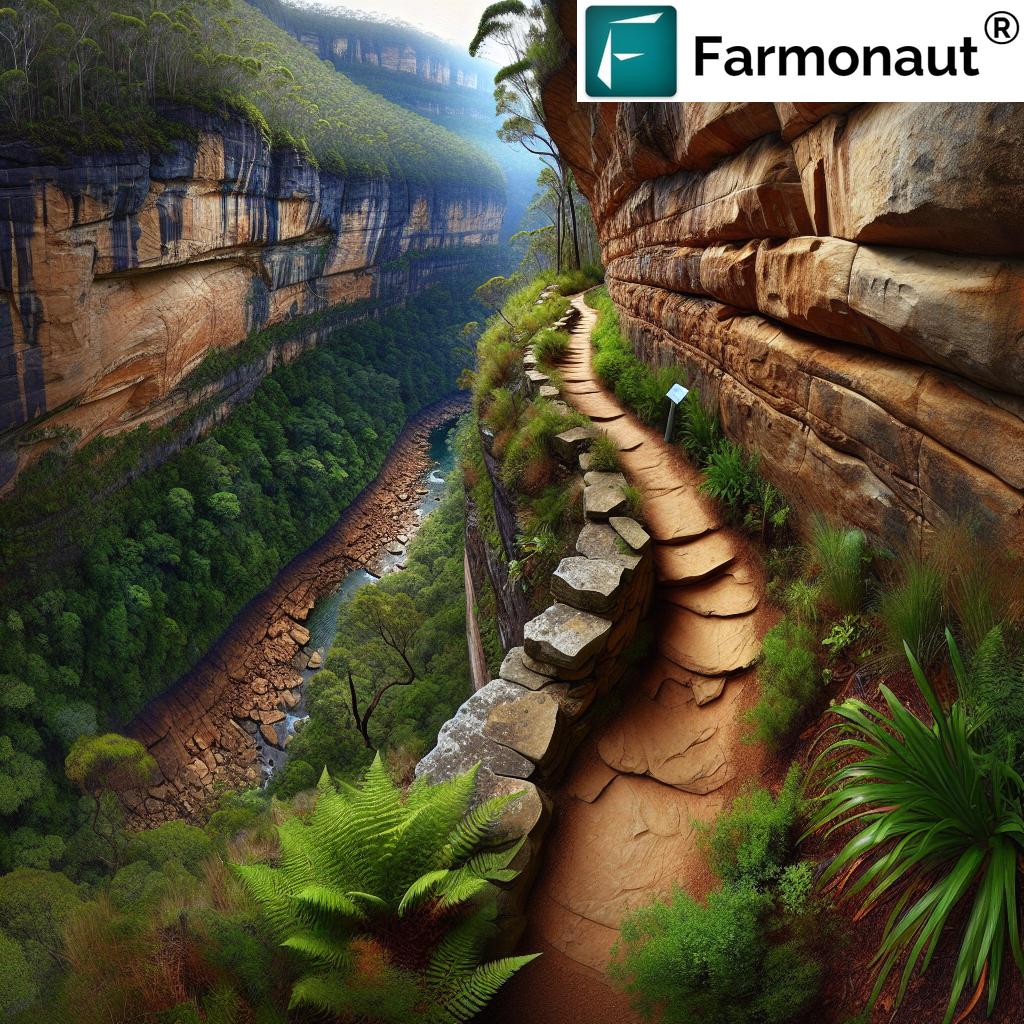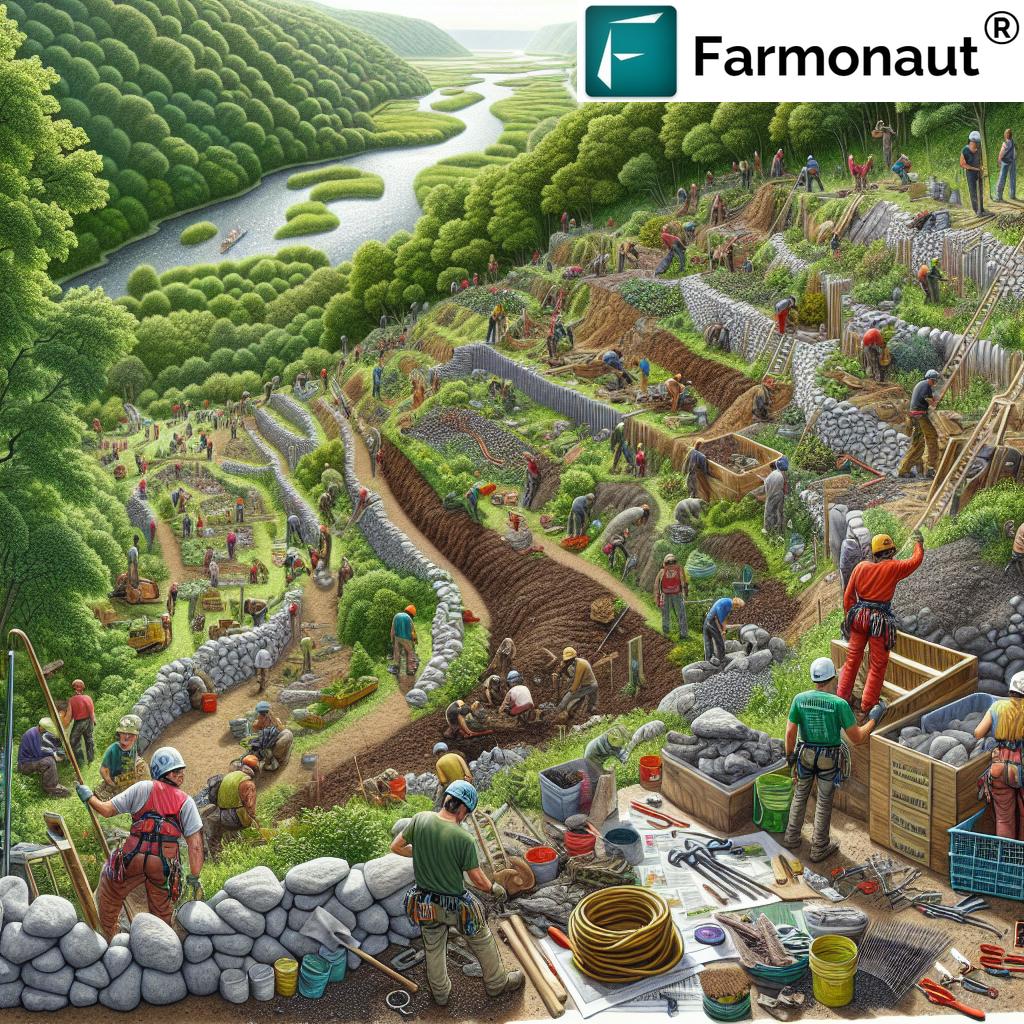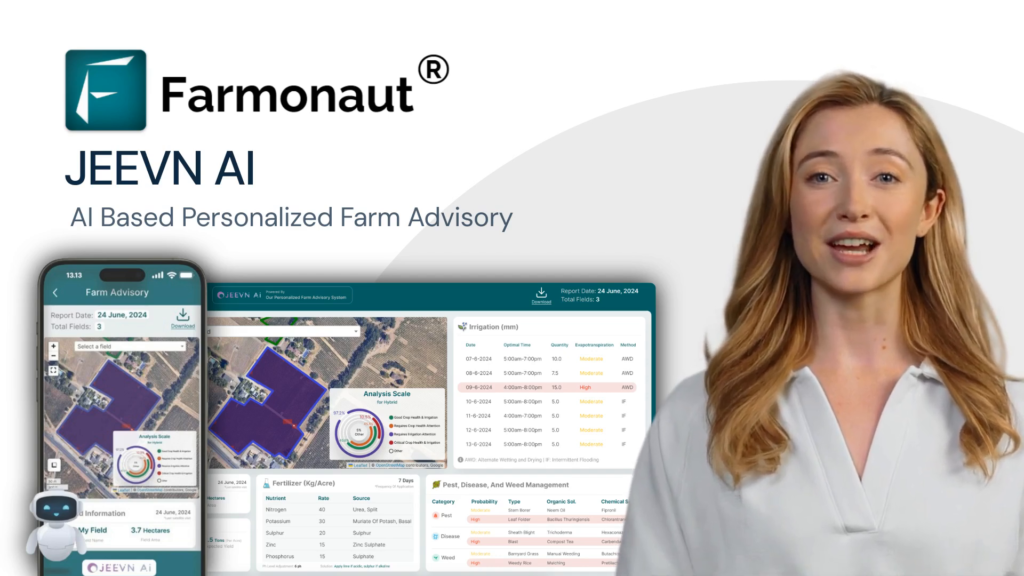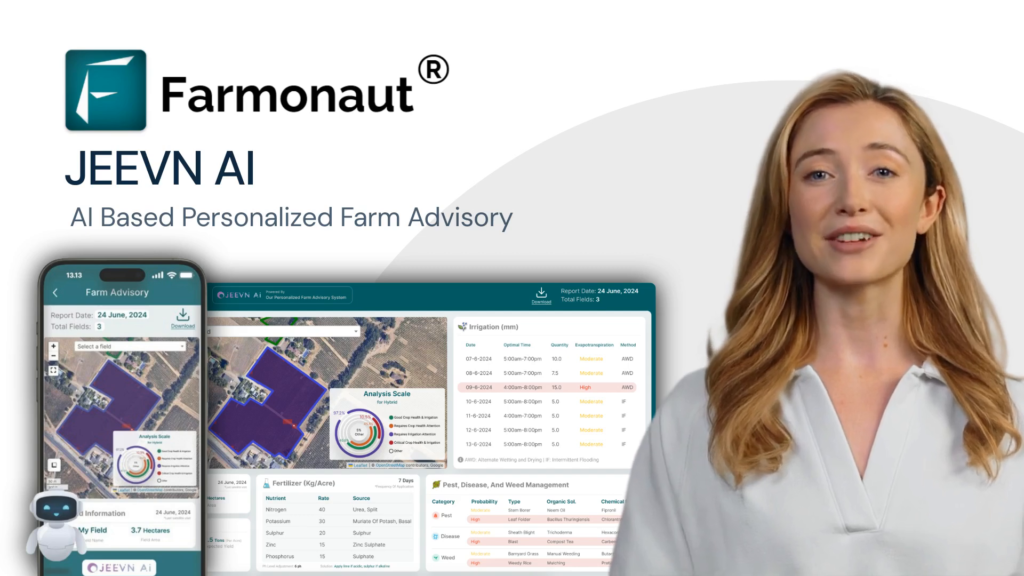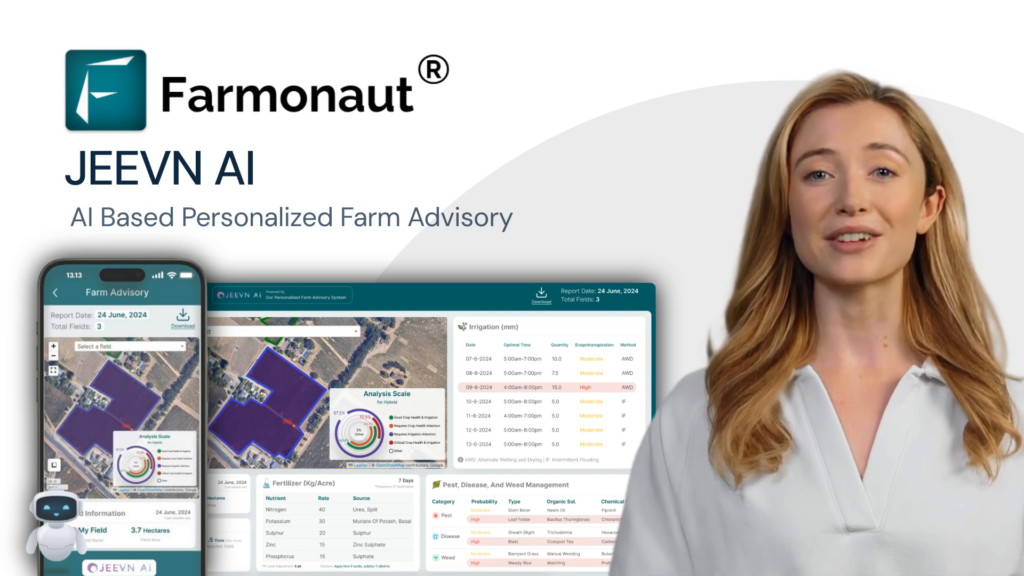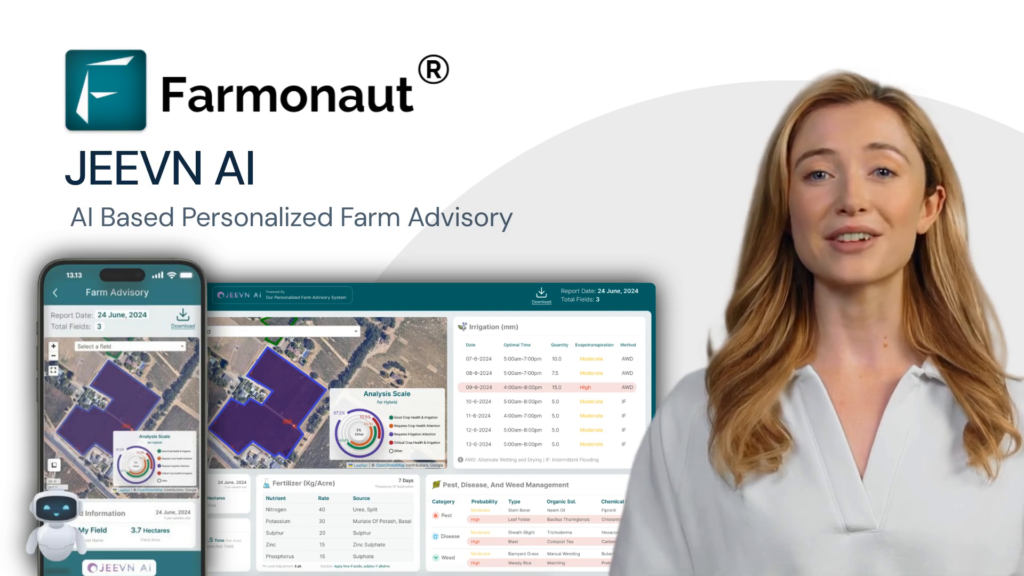Table of Contents
- Introduction: The Call for Erosion Control
- Inspiration: Volunteer Conservation Efforts Begin
- Understanding Erosion Control in Climbing Areas
- Erosion Control Projects: Methods for Stabilizing Land
- Building Retaining Walls & Redirecting Traffic
- Trail Maintenance for Climbing Areas: Protecting Accessibility
- Long-Term Impacts: A Decade Restoring New River Cliffs
- Impact Summary Table of 10 Years’ Efforts
- Technology for Sustainable Land Stewardship: Farmonaut
- Inspiring Video Stories of Conservation & Farmonaut
- How We Can All Help & Resources
- FAQs
- Conclusion: Preservation for Future Generations
“Over 10 years, volunteers restored New River Cliffs, stabilizing 5+ acres of vulnerable land for future climbers.”
Erosion Control Triumph: 10 Years Restoring New River Cliffs
Why Erosion Control Matters More Than Ever
As climbers, adventurers, and stewards of nature, it’s our collective responsibility to prevent the irreversible damage that unchecked erosion can wreak on the land, soil, and spectacular cliffs that define Nicholas County, West Virginia. Over the last ten years, the New River Alliance of Climbers (NRAC) and its dedicated group of volunteers have transformed what was once a growing crisis into an inspiring story of renewal through erosion control projects and climbing trail restoration.
Every spring, while most rest and recover, we—climbers and nature lovers—venture into the very areas we cherish, putting our hands in the dirt to ensure our beloved trails and cliffs stay accessible, stable, and pristine for years to come.
The Origins: Volunteer Conservation Efforts Ignite Hope
The seeds of this erosion control triumph were sown by a passionate group who refused to stand by as climbing areas deteriorated due to erosion, traffic, and overuse. The NRAC, based in Nicholas County, started gathering volunteers every spring for a week that’s ironically called Not Work Week. Despite the name, the labor is real—and crucial.
- Trail maintenance for climbing areas to keep them safe and accessible
- Building retaining walls to hold up eroding slopes
- Backfilling with rock and soil to stabilize the hillside
- Redirecting traffic onto durable pathways to prevent further damage
- Revegetation and regrowth initiatives to restore the natural landscape
Our effort is not just about conservation—it’s a pledge to future generations of climbers, hikers, and nature lovers: We leave the land better than we found it.
“Community-led erosion control preserved 3 miles of climbing trails, ensuring safe access and environmental health for a decade.”
Understanding Erosion Control in Climbing Areas
To grasp the magnitude of the projects undertaken in the New River region, we must first understand what’s at stake. In climbing destinations, erosion is accelerated by concentrated foot traffic, the removal of stabilizing vegetation, and the very nature of steep slope and cliff terrain. Trails leading to the walls or cliff bases deteriorate rapidly, especially in heavily trafficked areas.
When roots no longer anchor the soil, hillsides can collapse—posing risks not only to the environment but also to the climbers and belayers who depend on stable footing.
Typical Erosion Hazards in Climbing Areas:
- Loss of vegetation from repeated foot traffic
- Exposed, eroded slopes that funnel water and debris
- Unstable retaining walls
- Trail washouts, making routes hazardous and inaccessible
- Downhill movement of soil and rock (landslides risk)
Left unchecked, these hazards can transform precious land into scarred, unstable areas—sometimes rendered off-limits for safety.
Erosion Control Projects: Methods for Stabilizing Land and Trails
Over the past decade, our volunteer group at NRAC has developed and applied a toolkit of erosion control techniques tailored to the unique challenges of climbing areas in the New River region:
- Building Retaining Walls: Stacked rock and timber walls hold back soil and prevent hillside collapse.
- Backfilling and Grading: Strategic placement of soil and rock fills eroded zones and re-contours the slope.
- Redirecting Traffic: New trails and rerouted pathways disperse foot traffic onto durable surfaces.
- Vegetation Restoration: Erosion blankets, mulch, and strategic plantings promote root establishment and rapid regrowth.
- Continuous Trail Maintenance: Annual inspections and repairs ensure trails, walls, and drainage structures stay functional.
- Sectioning Off Impacted Area: Damaged sections are closed to allow for revegetation and regrowth.
Each project is hands-on—requiring coordination, strength, and a deep love for the land and cliffs we protect.
Building Retaining Walls & Redirecting Traffic: Holding It All Together
One of the cornerstones of erosion control projects in our region has been the construction of sturdy retaining walls and the strategic redirecting of traffic. These walls serve as defensive barriers, preventing the downward slippage of soil and supporting the slopes that lead to our most beloved climbing routes.
- Stonework: Every stone placed by a volunteer is both a physical block and a symbol of stewardship.
- Hand-built durability: By backfilling with rock and soil, we ensure that these walls are built for longevity—even in the face of harsh weather and high traffic.
- Improving passability: These interventions keep the area safe and accessible, giving all users—including new climbers—safe access for years to come.
We also install guide markers and signage to direct climber movement, further limiting erosion by channeling traffic onto durable trails and away from vulnerable areas.
Why Volunteer Erosion Control Is Effective
By taking ownership of our lands, we address challenges at the ground level, rapidly responding to developing issues and keeping pace with increasing visitor numbers. It’s the difference made by many hands, year after year, that accrues into meaningful regrowth and protection.
Trail Maintenance for Climbing Areas: Volunteer Conservation in Action
Trail maintenance is where our ongoing commitment shines brightest. Each year, volunteers dedicate time and muscle to:
- Rebuilding eroded approach trails
- Restoring or improving trail drainage
- Installing new hardware for climber safety
- Monitoring soil health, surface stability, and vegetation regrowth
- Sectioning off areas in need of ecological rest and revegetation
These efforts have not only improved visitor experience and preserved the region’s wilderness character but have also become a model of sustainable land stewardship—demonstrating how user groups can act as effective stewards.
Boosting Restoration and Land Monitoring with Farmonaut
For even larger landscape-scale conservation, modern satellite-based solutions like Farmonaut Large Scale Farm Management offer comprehensive platforms for land managers and organizations overseeing vast lands. These tools provide real-time area monitoring, resource allocation, and impact tracking—boosting conservation efficiency beyond manual labor. The Farmonaut app streamlines the management of environmental initiatives for national parks, mountain reserves, and large community lands.
Efficient use of volunteer resources and equipment is also aided by Farmonaut Fleet Management, allowing optimized logistics for larger projects and quick deployment to remote areas.
Not Work Week: Where Fun and Conservation Collide
While demanding, “Not Work Week” is powered by camaraderie, communal meals, and the shared joy of revitalizing the land. As NRAC President Matt Carpenter puts it: “We call it Not Work Week because we have so much fun that it doesn’t even feel like work.”
The truth is, volunteer conservation here in the New River area is both a labor of love and a celebration of wild places.
Long-Term Impacts: A Decade Restoring New River Cliffs
Ten years of backbreaking but rewarding effort have yielded quantifiable, awe-inspiring results across trails, walls, cliffs, and adjacent land:
- More than 20 major erosion control projects completed
- Three miles of trails restored and stabilized
- Over five acres of formerly eroded land rejuvenated
- Hundreds of volunteers mobilized across a decade
- Climbing destinations kept accessible for all user groups
- Vegetation recovery rates exceeding 80% in some sections
More than just numbers, these victories represent the healing of our river valley, the accessibility of routes for new climbers, and the continued beauty of sandstone cliffs that are the region’s signature.
As our ranks grow, so does our duty: The most heavily trafficked areas on both public and private land are now models of sustainable stewardship, providing hope for other regions facing similar ecological challenges.
Tracking and reducing our environmental impact is essential. With Farmonaut Carbon Footprinting, organizations and park managers can monitor their restoration projects’ carbon emissions over years, further integrating sustainability into all activities.
Farmonaut’s Traceability Solution also helps organizations, NGOs, and eco-projects prove responsible practices and transparency, creating trust with community and stakeholders.
Impact Summary Table: Ten Years of Volunteer Erosion Control
Below, we highlight a decade of accomplishments in erosion control, maintenance, and revegetation at the New River Cliffs. This table demonstrates the measurable impact of community-led conservation over time, underscoring the essential role of volunteers in preserving access to public lands.
| Year | Erosion Control Techniques Applied | Estimated Restored Land (sq. meters) | Volunteers Involved | Visible Environmental Impact |
|---|---|---|---|---|
| 2015 | Initial trail maintenance, basic crib wall installs | 250 | 18 | 15% vegetation recovery, trail partly stable |
| 2016 | Expanded retaining walls, traffic rerouting | 400 | 22 | 25% vegetation, major trail erosion halted |
| 2017 | Revegetation efforts, durable pathway creation | 600 | 31 | 35% vegetation, hillside stability improved |
| 2018 | Larger walls, backfilling, new signage | 800 | 38 | 50% vegetation, trails stabilized |
| 2019 | Hardware replacement, new approach trails | 1000 | 45 | 60% vegetation, full trail access restored |
| 2020 | Sectioning for regrowth, enhanced drainage | 1300 | 50 | 65% vegetation, hillside fully secure |
| 2021 | Revegetation, expanded pathways, advanced walls | 1600 | 61 | 70% vegetation, multi-route recovery |
| 2022 | Full slope stabilization, user traffic control | 1900 | 75 | 80% vegetation, near-total trail stability |
| 2023 | Maintenance cycles, regrowth monitoring | 2100 | 93 | 85% vegetation, destination fully accessible |
| 2024 | Large-scale hardware upgrades, revegetation | 2200 | 105 | 90%+ vegetation, exceptional trail rating |
For organizations planning reforestation or vegetation restoration in impacted areas, platforms like Farmonaut’s Crop Plantation & Forest Advisory offer remote monitoring tools, enabling precise planning and monitoring of environmental recovery in parks and protected lands.
Technological Frontiers: Farmonaut and Sustainable Land Stewardship
The heart of successful restoration is information—knowing where erosion is most severe, which areas need immediate intervention, and how best to allocate volunteer and material resources. Farmonaut is a leader in providing satellite-driven solutions, bringing affordable, advanced land monitoring to organizations and land stewards worldwide.
- Real-Time Crop and Vegetation Health Monitoring: With NDVI and multispectral satellite images, we can track vegetation recovery in restoration areas month by month.
- Soil Moisture Analysis: Helping pinpoint which zones are most at risk for erosion or regrowth failure.
- AI-Based Recommendations: Smart, data-driven advice for trail placement, revegetation, and maintenance schedules.
- Resource & Fleet Management: Keeping track of volunteer crews, equipment, and timelines.
- Carbon Footprint Tracking: Measuring environmental benefits over time.
- Blockchain Traceability: Demonstrating transparent, responsible stewardship to partners and the community.
By integrating platforms like Farmonaut, we supercharge our stewardship of public and private lands, ensuring every project has maximum, measurable impact—for the county, the state, and beyond.
Farmonaut’s API enables seamless integration for land agencies and developers. Discover more at the Farmonaut Satellite API and read our comprehensive API Developer Docs.
Inspiring Video Stories: Land, River, and Conservation Innovation
Watch our videos to understand the breadth of restoration—both through hands-on volunteer conservation in New River and next-generation stewardship with satellite and AI technology:
- Hands-on Erosion Control & Satellite Innovation
- Crop Monitoring & Mapping Technologies
- Remote Farm & Land Analysis for Sustainability
How We Can All Help: Get Involved and Learn More
The story of the New River cliffs is proof: Restoration is possible when enough of us care. Whether you’re a climber, hiker, landowner, or nature lover, your efforts—big or small—protect the places we love. Here’s how you can join in:
- Volunteer with the New River Alliance of Climbers (NRAC)—even a few hours count!
- Help with trail maintenance events and erosion control projects
- Learn and share best practices for outdoor land stewardship
- Support organizations and local groups focused on mountain parks and climbing area care
- Utilize technologies like Farmonaut for advanced land management
For those interested in responsible farming, reforestation, or park management, Farmonaut’s platform offers invaluable, affordable tools for sustainable management at any scale.
Frequently Asked Questions: Erosion Control & Climbing Stewardship
- Q: What are the main causes of erosion in climbing areas?
-
The primary causes include repeated foot traffic (often concentrated on small approach trails), the loss of stabilizing vegetation, water runoff on exposed slopes, and improper trail layout. These combine to accelerate soil movement, creating unstable conditions beneath cliffs.
- Q: How do retaining walls prevent soil erosion?
-
Retaining walls act as physical barriers that hold back soil and absorb the downward force of water and debris. By breaking the path of runoff and establishing new gradients, they help stabilize hillside terrain and facilitate the regrowth of roots and plants.
- Q: Why is community-led stewardship important?
-
Unlike centrally managed efforts, volunteer groups can respond quickly to shifting needs, ensuring that restoration matches actual ground conditions and use patterns. The sense of community ownership also fosters ongoing care for the land.
- Q: Can I use Farmonaut for non-farming restoration?
-
Absolutely. Farmonaut tools can be used by NGOs, parks, local government, and anyone managing land, vegetation, or forest resources for restoration, reforestation, or conservation.
- Q: How often should trails be maintained?
-
Ideally, trail maintenance should occur annually, before peak use season, and after significant weather events (storms, floods) to address urgent erosion issues promptly.
- Q: Are restoration efforts expensive?
-
While some projects require material costs (stone, timber, hardware), most of the value comes from volunteer labor. Technologies like Farmonaut help optimize resources, reducing unnecessary expenses and focusing investment where it matters most.
- Q: How can I get updates or donate to local projects?
-
Visit the NRAC website for upcoming volunteer events, success stories, and ways to provide financial or material support.
Conclusion: Together, We Ensure the Cliffs Stand for Generations
The ongoing restoration of the New River Cliffs in Nicholas County, West Virginia, exemplifies the power of community, sustainable innovation, and collective stewardship. Whether swinging a pick, hauling rock, planting a seedling, or leveraging satellite-based tools such as Farmonaut, we are all part of a movement to preserve and protect our valuable lands.
When we gather as a group, share our time, technology, and determination, we prevent the erosion of both land and tradition. The sandstone cliffs, winding trails, and sweeping river views will continue to inspire those who follow—because we worked, together, to hold them up.
Want to get involved with erosion control or start your own sustainable stewardship project? Explore more technology-enabled solutions with Farmonaut today.
“As the sport grows, so does our responsibility, and the best way to protect the cliffs we love is to tend to the ground that holds them up.”


